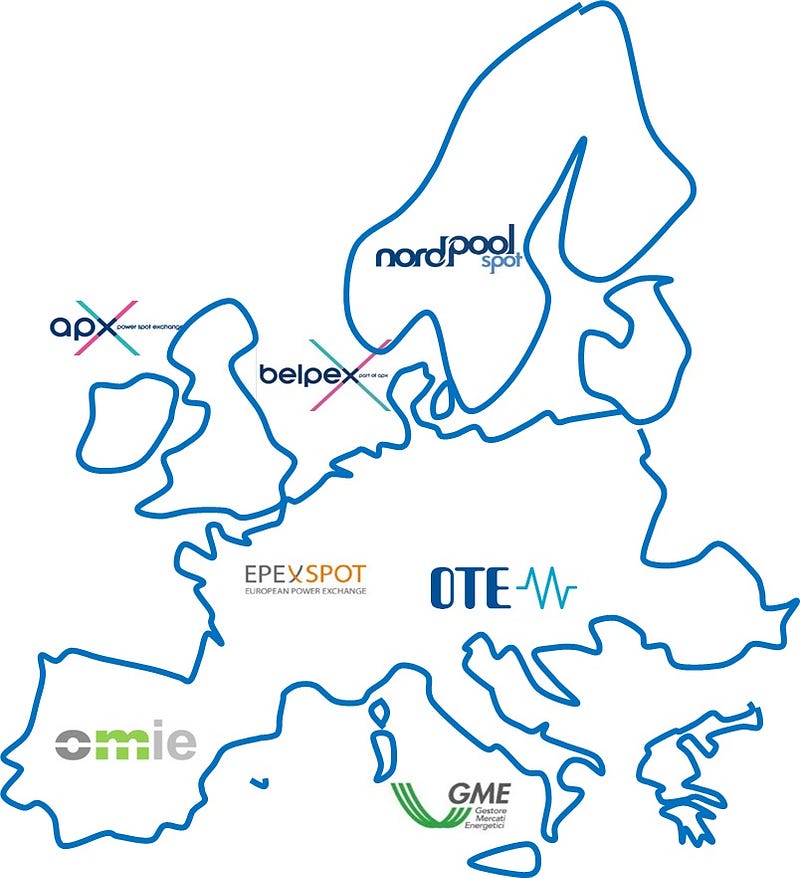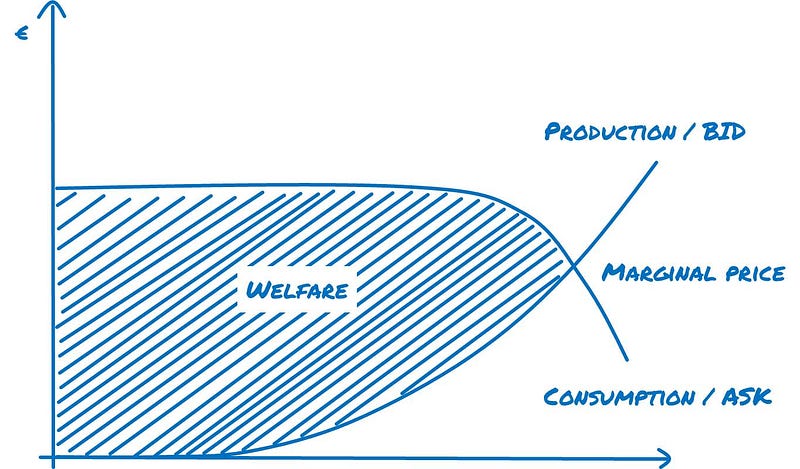How the information technology could change — in better — the most important energy market. Part one
Simply using the today technology instead of that of 90’s, the day-ahead energy market could be improved in financial efficiency and transparency.


In this two parts article, I’d like to show how the most important energy market could be improved adopting updated information technologies.
The energy market I’m talking about is the day-ahead power market. It’s the primary wholesales energy market and links many European countries.
In a world where the AI, the autonomous driving cars or the commercial space flights are reals, the day-ahead energy market is still based on 90’s technology. There are two stable technologies of the 2010s that could be introduced improving both the financial efficiency and the transparency of the market.
The technologies I’m thinking are:
- the re-optimization
- the cloud computing
In the second part of this article, we will see the improvement due to the cloud. Let we see now what the re-optimization enables.
What is the day-ahead power market
The day-ahead power market is the main wholesale market. In Europe, it is held by the PCR (Price Coupling of Regions) consortium, linking the following nations: Austria, Belgium, Czech Republic, Denmark, Estonia, Finland, France, Germany, Hungary, Italy, Latvia, Lithuania, Luxembourg, the Netherlands, Norway, Poland, Portugal, Romania, Slovakia, Slovenia, Spain, Sweden and UK.

You can find much information on the internet. For instance, you can check the Nord Pool website at this link: https://www.nordpoolgroup.com/the-power-market/Integrated-Europe/Price-coupling-of-regions/
Every day, the PCR determine the energy prices and the traded volumes using a special economic mechanism known as the implicit auction.
For a give day D, the PCR collects offers starting 9 days before the day D up to one day before the day D. There are two types of offers:
- A bid is submitted by a power producer and express the willingness to sell a given quantity of energy at a minimum price.
- An ask is submitted by a power consumer and express the willingness to buy a given quantity of energy at a maximum price.
The implicit auction makes possible to “match” as many offers as possible, granting the maximum trading of energy at the minimum total cost.

The implicit auction is an optimization problem solved every day with an optimization algorithm. From a mathematical point of view, the optimization problem contains many sources of difficulties. Mainly because it merges the rules of many different markets, linked together by a European transmission networks.
When the day-ahead market is closed, the implicit auction is solved in a very limited time. The market is closed at 12:00 AM and the official results are communicated ad 12:55 AM. Within this time window, the computational effort is limited to 10 minutes, despite the optimality consideration and hence despite the economic benefits. Here is where re-optimizations can make the difference.
What is the re-optimization
In order to solve an optimization problem, specific algorithms must be written. Typically, an optimization algorithm is made of three different parts: 1) read the input data; 2) solve the problem; 3) write the solution.
When an algorithm is designed to support the re-optimization, it can be possible to apply some changes to the input data and solve the problem taking some advantage of the most recent resolutions.
The re-optimization schema could be: 1) read the input data; 2) solve the problem; 3) write the solution; 1.1) add some other input data; 2.1) re-solve the problem; 3.1) write the new solution; 1.2) add some other input data; …
The advantage of the re-optimization is that the re-solve phases are much faster than solving the entire problem.
Main advantages
The PCR starts collecting offers 8 days before the closing of the market. This could be make possible the application of some re-optimization technique. For instance, 4 days before the closing, the optimization problem could be resolved “at the optimum” with the offers and network constraints known at that time. From that day on, the optimization problem could be solved every hour, adding to the last solved problem only the offers submitted within the last hour with some re-optimization technique.
In this way, into the time window ranging from 12:00 AM to 12:55 AM the actual result for the day-ahead could be solved with a single re-optimization step. Note also that, it is very reasonable that the new solving algorithm could already have calculated the optimal solution in some previous re-optimization step.
Indeed it is very reasonable that all the offers forming the actual prices are all submitted many hours before the closing of the market. And that all the subsequent offers will be rejected.
Commenti